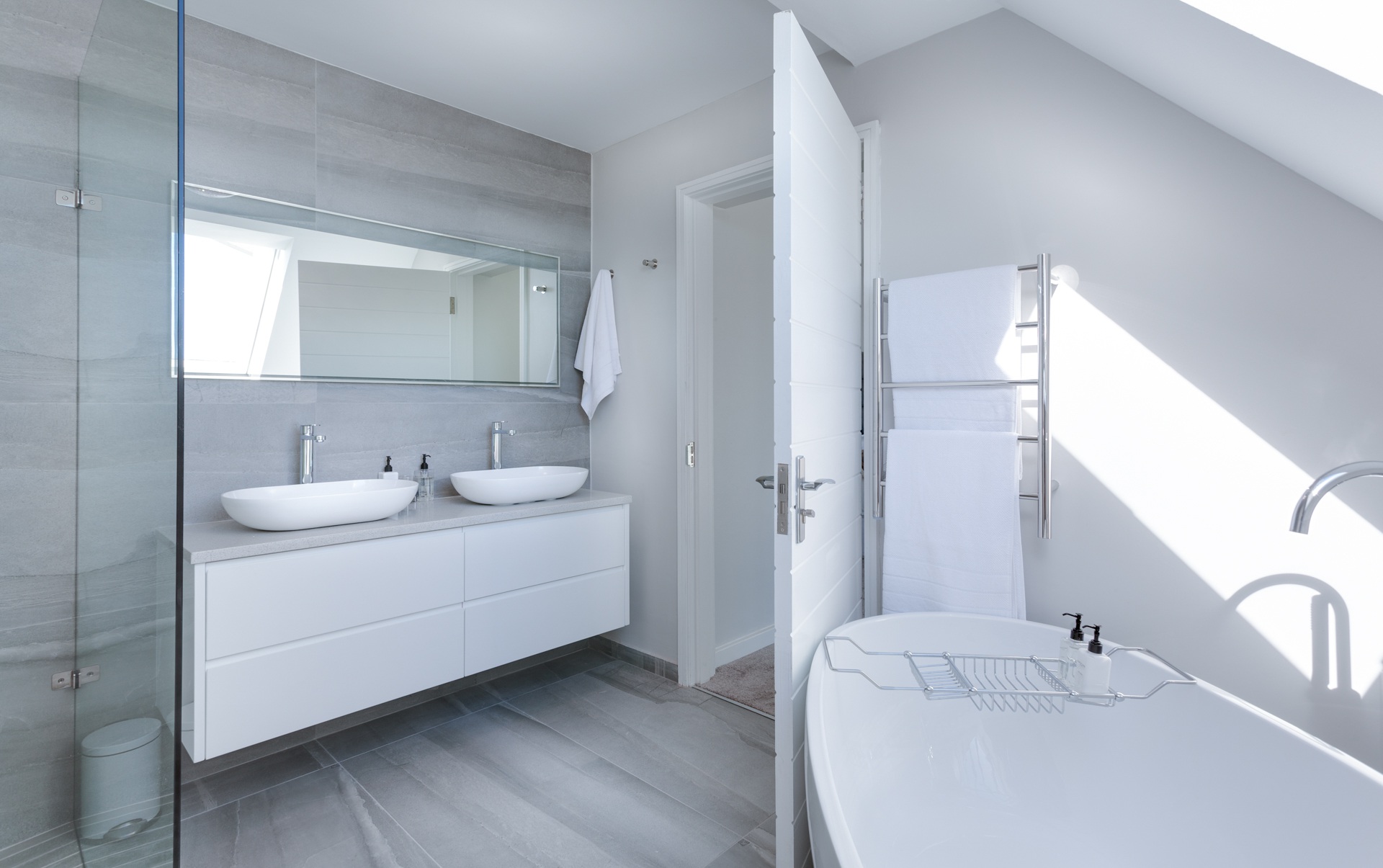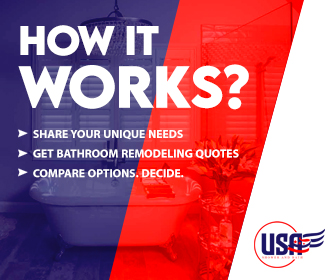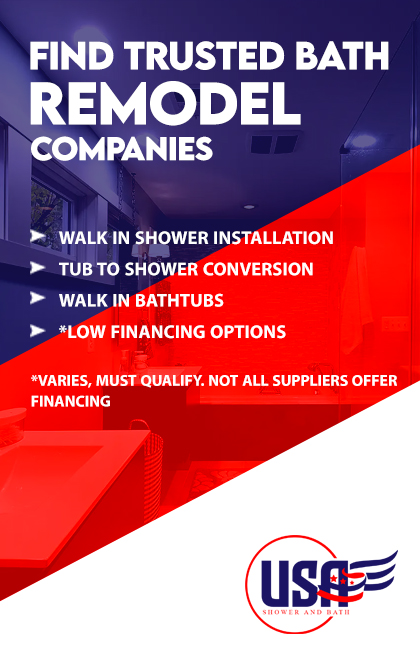
What is the Most Expensive Part of a Bathroom Remodel?
When undertaking a bathroom remodel, you can expect numerous expenses, but some parts are decidedly more costly than others. In this blog post, we will delve into these various aspects, providing a detailed analysis of the most expensive components of a bathroom remodel. Remodeling a bathroom can prove to be an expensive affair. While the average cost to remodel a bathroom in the U.S. ranges from $5,000 to $15,000, depending on the size and materials chosen, specific components can significantly contribute to the overall cost. Understanding these components can help you budget effectively and get the most value for your money.
Breakdown of Costs
Remodeling a bathroom involves multiple components and labor. Here’s a general breakdown of the typical costs:
- Labor: Depending on your location and the complexity of the project, labor can account for around 20% – 40% of the total remodeling cost. This includes plumbers, electricians, tile installers, and general contractors.
- Fixtures and Plumbing: This includes items like toilets, sinks, bathtubs, and showers. The costs can vary widely based on the quality and style chosen.
- Cabinetry and Storage: This includes vanities, medicine cabinets, and other storage solutions.
- Countertops: High-end materials like granite or quartz can add significantly to the total cost.
- Flooring: Depending on the material chosen, flooring can also add substantially to the overall cost.
- Lighting: This involves both the cost of fixtures and installation.
- Walls and Ceilings: Painting, tiling, or adding any decorative elements can increase costs.
- Doors and Windows: These are usually a smaller portion of the cost unless you opt for high-end options.
- Ventilation and Heating: Installation of new ventilation or heating systems can also contribute to the total cost.
The Most Expensive Part of a Bathroom Remodel
While every component contributes to the total cost, certain aspects of the remodel tend to consume a larger part of your budget:
- Labor: Labor is usually the most expensive part of a bathroom remodel. Professionals like plumbers and electricians typically charge by the hour, and their rates can be substantial. When you factor in the different trades needed to complete a bathroom remodel – carpenters, plumbers, electricians, tile installers, painters – the costs can quickly add up.
- Plumbing Fixtures: High-end fixtures and plumbing, such as custom-made showers, designer sinks, or luxury bathtubs, can also be a significant cost contributor. Opting for top-of-the-line fixtures can drastically increase your bathroom remodeling budget.
- Cabinetry and Countertops: Bathroom cabinetry and countertops, especially if custom-made or constructed from high-quality materials, can make a significant dent in your budget. Premium materials like marble, granite, or quartz for countertops, and solid wood for cabinetry can be quite expensive.
- Flooring: High-end flooring materials like natural stone or high-quality ceramic or porcelain tiles can be costly, especially if your bathroom is large. Labor costs for installing these types of flooring can also be significant.

Ways to Minimize the Costs
Now that we’ve identified the most expensive parts of a bathroom remodel, let’s explore some strategies that can help you manage these costs without compromising on the quality and aesthetics of your new bathroom.
Labor
- Do It Yourself (DIY): Some parts of the remodel, such as painting or even some tiling, can be done by yourself if you have the necessary skills and time. This can drastically reduce labor costs. However, remember that mistakes can be expensive to fix, so only DIY if you are confident in your abilities.
- Get Multiple Quotes: Different contractors will offer different prices for their labor. Get quotes from several sources before deciding to ensure you get the best price.
- Plan Efficiently: Effective planning and communication with your contractors can reduce the time they need to spend on the project, thereby lowering labor costs.
Plumbing Fixtures
- Select Mid-Range Fixtures: Opt for mid-range fixtures that offer durability and aesthetic appeal without the high-end price tag.
- Refurbish Instead of Replacing: If your existing fixtures are in good condition, consider refurbishing them instead of replacing. For instance, re-glazing an old, but sturdy bathtub can give it a brand new look at a fraction of the cost of replacement.
Cabinetry and Countertops
- Choose Cost-Effective Materials: Materials like cultured marble or laminate for countertops and MDF (Medium-Density Fibreboard) for cabinetry are cost-effective alternatives that still provide durability and a pleasing appearance.
- Refinish or Reface Cabinets: If your existing cabinets are structurally sound, consider refacing or refinishing them rather than replacing them entirely.
Flooring
- Choose Durable, Affordable Materials: Ceramic and porcelain tiles offer durability and a wide range of design options without the high cost of natural stone.
- Reduce Tile Areas: You can also minimize costs by reducing the areas to be tiled. For example, you might choose to tile only the shower area and use a less expensive flooring material in the rest of the bathroom.
Bathroom remodels can be an expensive undertaking, with labor, plumbing fixtures, cabinetry and countertops, and flooring often representing the most significant costs. However, with careful planning and wise material choices, it is possible to achieve a beautiful, functional bathroom remodel that fits your budget.
Remember, it’s essential to balance your desire for high-end materials and finishes with the realities of your budget. With a bit of creativity and flexibility, you can achieve a bathroom remodel that delivers both value and style.
Should You Hire a General Contractor or DIY Your Bathroom Remodel?
Deciding whether to hire a general contractor or to undertake a do-it-yourself (DIY) project for your bathroom remodel can be a challenging decision. Both options have their pros and cons, and the best choice largely depends on your individual circumstances and abilities. To help you make an informed decision, we’ll explore these options, focusing particularly on the importance of professional work.
The DIY Approach
The do-it-yourself approach is appealing to many homeowners due to its potential cost savings. After all, labor, as we previously discussed, can constitute a significant portion of a bathroom remodel’s budget.
Pros of DIY
- Cost Savings: DIY eliminates the labor costs, potentially saving you a considerable amount of money.
- Personal Satisfaction: There can be a great sense of achievement in completing a home improvement project on your own.
- Flexibility: When you are your own boss, you can work on your own schedule without having to coordinate with contractors.
Cons of DIY
- Time Consuming: Remodeling a bathroom is a major project that can take a significant amount of time, particularly for someone who is not a professional in the field.
- Mistakes Can Be Costly: Any mistakes made during a DIY project can lead to unexpected expenses. For instance, incorrect plumbing installation could result in leaks, water damage, and costly repairs down the line.
- Quality: Professionals have the skills, experience, and tools to deliver a high-quality finish that may be hard to achieve if you’re not experienced in remodeling.
Hiring a General Contractor
Hiring a general contractor can often be the more expensive route, but it also comes with many advantages, especially when it comes to the quality and speed of the work.
Pros of Hiring a Contractor
- Professional Quality of Work: A reputable contractor brings experience and expertise to the table. This often translates to a higher quality finish and attention to detail.
- Efficiency: Professionals can complete the work more quickly and efficiently than the average DIY enthusiast because they have the right tools, skills, and experience.
- Less Stress: Hiring a contractor can save you the stress and time involved in doing the work yourself.
Cons of Hiring a Contractor
- Cost: The most apparent downside of hiring a contractor is the added labor cost.
- Less Control: With a contractor, you may have less direct control over every detail of the project.
- Scheduling: You’ll need to coordinate with the contractor’s schedule, which might lead to delays if they are busy.
The Importance of Professional Work
When considering whether to hire a contractor or DIY, the importance of professional work cannot be overstated. Bathrooms are high-traffic, high-moisture areas, which can present a range of challenges.
- Quality: Professional contractors have the skills and experience to handle these challenges and ensure a high-quality result. Their work is likely to last longer and look better than a DIY job, especially if you’re not highly skilled in remodeling.
- Safety: Professionals are knowledgeable about building codes and safety regulations. This knowledge is particularly important in a bathroom remodel, where incorrect electrical or plumbing work can create hazards.
- Problem Solving: Professionals are adept at troubleshooting unforeseen issues that often arise during a remodel. As an amateur, it can be challenging to navigate these issues without professional help.
Deciding whether to DIY or hire a professional contractor for your bathroom remodel is a significant decision that depends on your skills, experience, time, and budget. While DIY projects can save on labor costs, the importance of professional, high-quality work is a crucial factor to consider.

By assessing your individual situation and weighing the pros and cons of each approach, you can make the best decision for your bathroom remodel. Hiring a contractor can often provide a higher quality, more professional result. They can ensure the project adheres to all necessary building codes and safety regulations, and efficiently troubleshoot any unexpected issues that may arise. Although this option may be more expensive, the long-term benefits and peace of mind often justify the costs.
On the other hand, a DIY remodel could be a suitable option if you’re experienced in home improvement projects and have ample time to devote to the task. However, remember to consider the potential hidden costs of DIY, such as time, tools, and the risk of expensive mistakes.
Remember, your bathroom remodel should be an investment that adds value to your home and improves your quality of life. Whichever route you choose, ensure you are delivering quality work that will withstand the test of time.
Hybrid Approach: A Middle Ground
In some cases, a hybrid approach might be the best route. You could take on the tasks you’re comfortable with, such as painting or simple demolition, and hire professionals for more complex jobs like plumbing and electrical work. This way, you can save some money without compromising the quality and safety of the remodel. A bathroom remodel is not only an opportunity to enhance your daily routines but also a chance to increase the value of your home. Whether you choose to hire a professional contractor or embark on a DIY project depends on your budget, skills, and the complexity of the remodel.
Keep in mind that professional work tends to ensure safety, adherence to building codes, and high-quality, durable results. DIY, while potentially cost-saving, requires a significant investment of time and effort, and there’s a higher risk of mistakes. Consider all these factors carefully before embarking on your bathroom remodeling journey. Remember, the goal is to create a space that suits your needs, brings you joy, and adds value to your home. Choose the route that will best help you achieve these objectives.
Top 10 Most Common Bathroom Renovation Projects
When planning a bathroom renovation, it can be helpful to consider the most common projects others undertake. Not only does this provide you with a comprehensive idea of what’s possible, but it can also help you prioritize tasks based on your budget, needs, and wants. Here are the top 10 most common bathroom renovation projects along with a rough price range for each.
- Installing a New Toilet: A bathroom renovation often includes installing a new toilet. This can be due to wear and tear, the need for water efficiency, or simply for aesthetic reasons. The price range for a new toilet and installation can be anywhere from $200 to over $1,000 for high-end models.
- Upgrading Light Fixtures: One of the simplest ways to modernize a bathroom is by upgrading the light fixtures. It’s amazing how much this small change can transform the space. Depending on the style chosen, the price range for new light fixtures and installation can range from $50 for basic fixtures to $400 for more luxurious designs.
- Updating Faucets and Showerheads: Similar to light fixtures, faucets and showerheads can significantly impact the look and feel of your bathroom. Modern, water-efficient models can improve functionality while adding style. Expect a price range of $150 to $1,000 for new faucets and showerheads.
- New Vanity or Sink: A new vanity or sink can be both a practical and aesthetic upgrade. The price range can vary greatly here, from $200 for a basic pedestal sink to $1,000 or more for a high-quality vanity with a built-in sink.
- Installing New Tile: New tile for the floors or shower can make a dramatic impact in a bathroom renovation. Depending on the type of tile chosen, you might spend anywhere from $500 to $3,000 on this project.
- Bathtub or Shower Replacement: Replacing the bathtub or shower is a significant task that can drastically improve the functionality of your bathroom. This type of project can range from $500 for a basic shower stall to $5,000 or more for a luxury whirlpool tub.
- Upgrading the Countertop: Upgrading a vanity countertop can significantly enhance the look of your bathroom. Depending on the material used (like laminate, granite, or quartz), the price range can be from $200 to $1,500.
- Improving Ventilation: Adequate ventilation is crucial in bathrooms to prevent mold and mildew. Installing or upgrading an exhaust fan is a common project, which can cost between $200 and $500 including installation.
- Adding Storage Space: Whether it’s installing shelves, cabinets, or a medicine chest, adding storage space is a frequent aspect of bathroom renovations. The price range here can vary widely based on the solution, from $100 for simple shelves to $1,000 or more for custom cabinetry.
- Painting or Wallpapering: A fresh coat of paint or new wallpaper can dramatically change the look of your bathroom. Typically, painting or wallpapering a bathroom can range from $200 to $600, depending on the size of the space and the type of paint or wallpaper chosen.
A bathroom renovation can include a wide range of projects, from simple fixture replacements to more comprehensive overhauls like a new toilet or bathtub. Regardless of the scope of your renovation, understanding these common projects and their price range can help you plan and budget your bathroom remodel effectively.

The Best Materials to Use in a Bathroom Renovation
Choosing the right materials is an essential part of any successful bathroom renovation. The materials you choose need to withstand high humidity levels, frequent cleaning, and daily use, all while maintaining their aesthetic appeal. Here are some of the best materials to consider for various parts of your bathroom remodel.
Flooring
Flooring in a bathroom needs to be water-resistant, durable, and ideally, comfortable underfoot. Here are some top choices:
- Porcelain and Ceramic Tiles: These are among the most popular bathroom flooring choices due to their durability, water resistance, and wide variety of design options. They’re also relatively easy to clean and maintain.
- Natural Stone: Materials like marble, granite, or slate can add an air of luxury to your bathroom. However, they’re more expensive and require more maintenance than ceramic or porcelain.
- Vinyl: Vinyl is a cost-effective, water-resistant option that can mimic the look of more expensive materials. It’s comfortable underfoot and is a good insulator, providing warmth in cooler months.
Walls
Bathroom walls can be subject to lots of moisture, so it’s crucial to choose water-resistant materials:
- Ceramic and Porcelain Tiles: Like for flooring, these tiles are excellent for walls due to their durability and water resistance.
- Acrylic and Glass: Acrylic sheets or glass panels can provide a sleek, modern look to your shower or bathroom walls and are incredibly easy to clean.
- Paint: Use high-quality, semi-gloss or gloss paint intended for bathrooms and kitchens as it’s more resistant to humidity and easier to clean.
Countertops
Countertops need to be resilient and able to withstand water, cosmetics, and other common bathroom items:
- Quartz: Quartz countertops are extremely durable, non-porous, and require little maintenance, making them ideal for bathrooms. They’re also available in a variety of colors and patterns.
- Granite: Granite is a less porous option than marble and adds a touch of luxury to the bathroom. It’s also heat resistant.
- Laminate: For a budget-friendly option, laminate countertops have come a long way in recent years with designs that mimic wood, stone, and other high-end materials.
Cabinets
Cabinets in bathrooms need to withstand high humidity and frequent use:
- Plywood: Plywood is a good option for bathroom cabinetry because it’s sturdy and holds up well in moist environments.
- Medium-Density Fiberboard (MDF): MDF is less expensive than solid wood but is still strong and can come with a variety of veneers to give the look of higher-end materials.
Fixtures
Fixtures should be chosen not just for their aesthetics but also their durability:
- Stainless Steel and Brass: These materials are both resistant to corrosion and wear, making them ideal for faucets and showerheads.
- Copper: Copper has natural antibacterial properties, making it a hygienic choice for bathroom fixtures.
Remember, the best materials for your bathroom renovation will largely depend on your budget, design preferences, and lifestyle. The goal is to choose materials that are durable, maintainable, and fit with the aesthetic of your space, ensuring that your remodeled bathroom will remain functional and beautiful for years to come.
What is a Realistic Bathroom Remodel Budget?
Determining a realistic budget for your bathroom remodel is an essential first step in the renovation process. It helps you prioritize what aspects to include in your renovation, and what you can defer or forgo based on affordability. Your budget will be influenced by various factors, including the bathroom remodel cost, the size of your bathroom, and the desired changes to the floor plan.
How Much Does a Bathroom Remodel Cost?
The cost of a bathroom remodel can significantly vary depending on the scale of your renovation. A minor update like replacing fixtures or repainting walls could cost just a few hundred dollars, while a full-scale remodel that includes changing the floor plan, replacing all fixtures, and updating finishes could run into tens of thousands.
On average, a typical bathroom remodel can cost between $6,000 and $15,000. However, high-end, luxury remodels can reach $25,000 or more. These figures can fluctuate based on where you live, the specific materials you choose, and whether you do some of the work yourself or hire professionals for the entire project.
Impact of the Size of Your Bathroom
The size of your bathroom plays a significant role in determining your renovation budget. As you might expect, larger bathrooms tend to cost more to remodel than smaller ones due to the additional materials and labor required. For instance, more square footage means more flooring, more paint, and potentially more fixtures.
That said, while remodeling a small bathroom might be cheaper overall, it could cost more per square foot as contractors often have a minimum charge. Furthermore, small spaces might require custom fixtures or features to fit into tight spaces, which could increase the cost.

Changing the Floor Plan
Changing the floor plan is one of the most expensive aspects of a bathroom remodel. This often involves moving plumbing and electrical systems, which requires a professional to ensure everything is up to code. Depending on what changes you’re considering, adjusting the floor plan can add several thousand dollars to your overall bathroom remodel cost.
When determining a realistic budget for your bathroom remodel, it’s crucial to consider the size of your bathroom, whether you’re planning to change the floor plan, and the type of finishes and fixtures you’re hoping to include. Additionally, it’s always wise to set aside an additional 10-20% of your budget for unexpected costs that can arise during a remodel.
By carefully planning your budget and making design choices that align with it, you can create a beautifully renovated bathroom that not only enhances your home’s value but also improves your daily life, all without breaking the bank.
Types of Bathroom Remodels: From Half Baths to Master Bathrooms
When it comes to bathroom remodels, the type of bathroom you’re updating significantly affects the scale and cost of the project. From half baths to master bathrooms, the size and function of the space should guide your renovation decisions.
Half Bath Remodels
A half bath, often referred to as a powder room, typically contains just a sink and a toilet. Given the smaller size, a half bath remodel can be less expensive than other bathroom remodels. However, because these rooms are often situated in high-traffic areas of the home, you might choose high-end finishes to impress your guests, which can increase the cost.
On average, the remodel cost for a half bath can range from $2,000 to $7,000, depending on your choice of fixtures, finishes, and whether any significant plumbing alterations are needed.
Full Bathroom Remodels
Full bathrooms contain a sink, toilet, and a shower or bathtub. If you’re remodeling a family or guest bathroom, you may opt for durable and functional fixtures and finishes. The typical cost for a full bathroom remodel can range from $6,000 to $15,000, but the final cost can vary widely based on the size of the bathroom and the materials used.
Master Bathroom Remodels
Master bathrooms are usually the largest bathrooms in the home and often include luxury features. Remodeling a master bathroom might involve high-end finishes and fixtures, a double vanity, a separate shower and bathtub, and even heated floors. Given the larger size and the desire for more luxurious features, master bathroom remodels can be the most expensive, averaging between $10,000 and $30,000 or more.
Financing Your Bathroom Remodel
If you’re considering a significant bathroom remodel, especially for a larger bathroom like a master bath, you might need to consider various financing options. One potential solution is a home equity loan. This type of loan allows you to borrow against the equity you’ve built up in your home, often at a lower interest rate than other types of loans. It’s an attractive option if you’re undertaking a substantial renovation that will ultimately increase the value of your home.
However, like any financial decision, it’s important to weigh the benefits against the risks. While a home equity loan can make your remodel more affordable in the short term, it does use your home as collateral. Therefore, it’s crucial to ensure you can handle the repayment plan.
Whether you’re sprucing up a half bath or transforming a master bathroom into a luxurious retreat, it’s essential to tailor your remodel to the type of bathroom and your budget. If you’re considering a home equity loan to finance a larger bathroom remodel, be sure to consult with a financial advisor to ensure it’s the right decision for your financial situation. A bathroom remodel is a significant investment, but with careful planning and budgeting, it can greatly enhance the comfort and value of your home.
Will a Bathroom Renovation Increase Home Value?
Investing in your home through renovations can not only make your living experience more enjoyable but can also significantly increase your home’s value. This is particularly true for bathroom renovations. A well-executed bathroom remodel can provide a solid return on investment (ROI) when it comes time to sell your home, along with a host of other benefits.
Increase in Home Value
According to a report from Remodeling Magazine, homeowners can expect to recoup about 60-67% of their investment on a bathroom remodel when they sell their home. While this number depends on various factors, such as the quality of the remodel and the housing market conditions, it’s clear that a bathroom renovation can add considerable value to your home.
High-quality, desirable features like walk-in showers, double vanities, and updated fixtures can make your bathroom more appealing to potential buyers and increase the overall selling price of your home. However, it’s essential to keep your renovation in line with the style and standard of the rest of the house and neighborhood. An overly extravagant bathroom in an otherwise modest house might not yield the return you hope for.

Additional Benefits of a Bathroom Remodel
Besides increasing your home’s value, a bathroom remodel comes with other benefits that can enhance your lifestyle:
- Improved functionality: Remodeling allows you to tailor the bathroom to your needs, whether that means installing a double vanity to ease morning rush hours or updating the shower for a more relaxing experience.
- Enhanced aesthetics: A dated bathroom can be an eyesore. Upgrading it can enhance the look and feel of the space, making your daily routine more enjoyable.
- Increased energy efficiency: Newer, energy-efficient fixtures can reduce water and electricity usage, helping you save money on utility bills and promoting a more sustainable lifestyle.
- Better utilization of space: A remodel can help you better utilize your bathroom space. For instance, you could replace a seldom-used bathtub with a spacious shower or add storage to reduce clutter.
A bathroom renovation is a significant investment that can boost your home’s value and make your home more appealing to potential buyers. More than that, it can drastically improve your day-to-day life by enhancing the function and aesthetics of your bathroom. However, it’s crucial to plan your remodel carefully, considering your current needs and future resale plans, to ensure that your investment is worthwhile. If done right, a bathroom remodel can offer you the best of both worlds: a bathroom you love to use today and a higher selling price in the future.
A Look at Bathroom Remodeling Costs and Considerations
When planning a bathroom remodel, understanding the average price for various projects can help you budget more effectively and set realistic expectations. Whether you’re making cosmetic upgrades or reimagining your bathroom design with a new shower, factoring in both material and installation costs is crucial for a successful remodel.
Average Price of a Bathroom Remodel
As we discussed earlier, the average price for a bathroom remodel can vary considerably, depending on the size of your bathroom and the extent of the renovations. On the lower end, minor cosmetic upgrades can cost a few thousand dollars, while a full-scale remodel can extend into the tens of thousands.
It’s essential to get estimates from multiple contractors to get a better idea of what the average price for your specific remodel might be. Be sure to ask for detailed quotes that break down both materials and installation costs so you can better understand where your money is going.

Cosmetic Upgrades
Cosmetic upgrades are a cost-effective way to breathe new life into your bathroom. These could include painting the walls, replacing light fixtures, adding new hardware, or updating the mirror.
These minor updates can dramatically improve the look of your bathroom without the higher cost of a full remodel. The average price for cosmetic upgrades can range from $1,000 to $3,500, depending on the specifics of the project and the materials you choose.
Bathroom Design and New Shower Installation
Perhaps you’re looking to make more substantial changes to your bathroom design, such as installing a new shower. The price for this kind of renovation will be significantly higher due to both the cost of the new fixture and the associated installation costs.
On average, the cost to install a new shower ranges from $1,200 to $5,500, depending on the type of shower you choose. Prefabricated shower units are generally less expensive but offer fewer design options. In contrast, custom tiled showers offer more design flexibility but come with a higher price tag.
Bathroom remodeling can be a significant investment, but it’s one that can improve your home’s comfort, functionality, and value. Whether you’re planning minor cosmetic upgrades or a complete bathroom redesign, understanding the average price of these projects, including material and installation costs, will help you set a realistic budget and plan more effectively. Remember, while a bathroom remodel can add value to your home, the most important thing is to create a space that you and your family will love and enjoy using every day. With careful planning and thoughtful design choices, your new bathroom can become a cherished oasis in your home.
